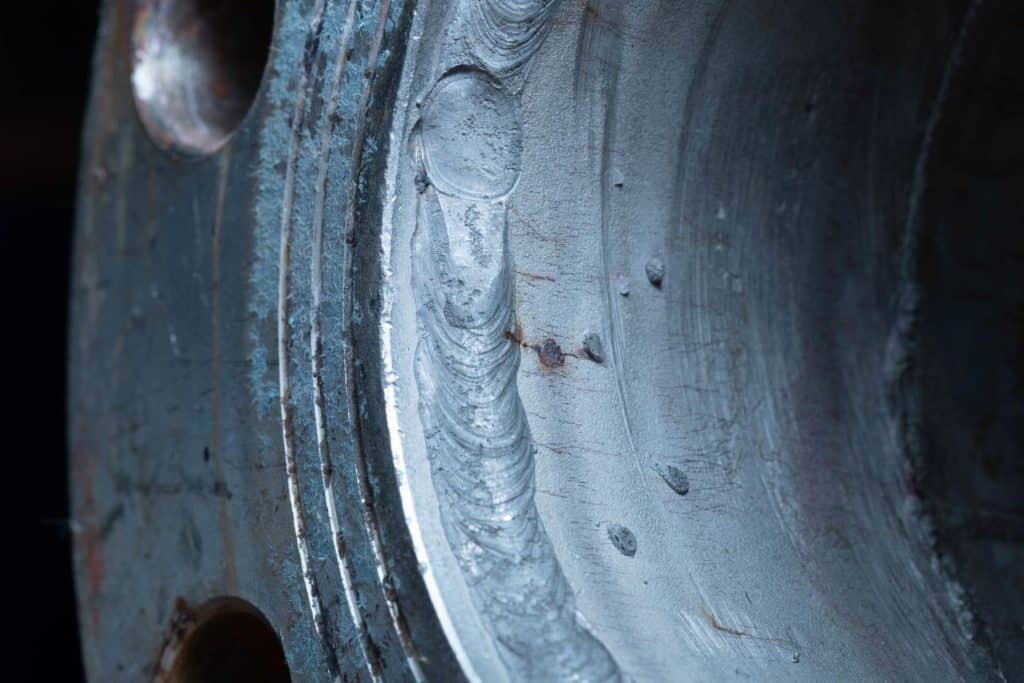Detecting Stress Corrosion Cracking and HTHA

High-temperature hydrogen attack (HTHA) is an unpredictable hazard that can damage the strength and ductility of steel or stainless steel. HTHA mostly occurs in hydrogen environments that are typically present in refineries, petrochemical plants, and chemical facilities subject to high temperatures and stress. HTHA and stress corrosion cracking can lead to degradation of metal quality. Such flaws can be difficult to identify, which means the intensity of risk associated with the damage is even higher.
It can be easier and less damaging to maintain a safe operational system with early identification of stress corrosion cracking and HTHA. This can be done with the advantages offered by advanced non-destructive testing (NDT) techniques, which can ideally inspect for possible flaws without damaging the component or increasing the downtime within the operation.
Challenges With Inspecting Cracking and HTHA Corrosion
HTHA and stress corrosion cracking are two very dangerous flaws that can occur across various industries—mostly due to their difficult-to-detect nature. HTHA occurs in metals such as steel exposed to hydrogen under high pressure and temperatures above 400°F. At this high temperature, the carbide existing in steel absorbs the hydrogen to form air bubbles, leading to cracking. Similarly, stress corrosion cracks can be the result of a corrosive environment, high temperatures, and high tensile stress. The individual small cracks can grow and form larger colonies, decreasing the structural strength.
Inspection to detect these flaws can provide early insight into any forthcoming issues, allowing industries to minimize the risk of operational failure and improve safety standards. NDT methods like ultrasonic testing (UT) and eddy-current testing (ECT) have been employed for their excellent flaw detection abilities across many industries. In recent years, the accuracy and efficiency of advanced phased array ultrasonic testing (PAUT) technology have made it a preferred choice for these types of inspections.
Detecting Stress Corrosion Cracking and HTHA with Ultrasonic Inspection
The initial formations of stress corrosion cracks and HTHA are difficult to detect visually due to their very small sizes. A better way of identifying these flaws is with powerful ultrasonic testing techniques. Advanced PAUT instruments and probes can be highly efficient in detecting the location, size, and intensity of stress corrosion cracks and HTHA flaws. An ideal PAUT instrument has the capability to:
- Produce a scan of the inspection surface to provide high-resolution imaging. This can be instrumental in detecting the size of the microcracks and colonies.
- Focus beams to allow for identification of air bubbles and cracks as well as accurate positioning of these flaws.
Advanced PAUT tools can also be utilized with the following inspection techniques to provide the best inspection results:
- TOFD (Time-of-Flight Diffraction) is suitable to identify grain noise and A-scan signal clustering. Increased noise and cluster may indicate early-stage HTHA. This is used as an initial inspection technique along the metal surface and welds.
- With TULA (TOFD Ultra-Low Angle), it is easier to scan thicker metals. Increased noise and clustering identified with TULA can help indicate HTHA.
- Live TFM (Total Focusing Method) can be used for further verification of these flaws and their appropriate characterization.
NDT Solutions: Accuracy and Efficiency in Detecting Stress Corrosion Cracking and HTHA
The ability to identify stress corrosion cracking and HTHA damage within the early stage of an operation is highly beneficial for industries to seek solutions before more damage is done. With the reliability of PAUT instruments such as Zetec’s TOPAZ 64, industries can ensure accuracy and precision in stress corrosion cracking and HTHA damage detection. Leveraging the cumulative advantage of PAUT, TOFD, TULA, and TFM can also act as an ideal strategy for industries in ensuring the operational quality up to the industrial standards.
Zetec is a leading provider of non-destructive testing (NDT) solutions with a goal to provide critical inspection needs of industries. Our eddy current and ultrasonic testing technologies help clients accurately identify stress corrosion cracking and HTHA damage at its earliest formation stage, minimizing the risk and ensuring the quality of the metal component. To learn more about how we can deliver solutions to optimize productivity, safety, and total cost of ownership, contact us today.
